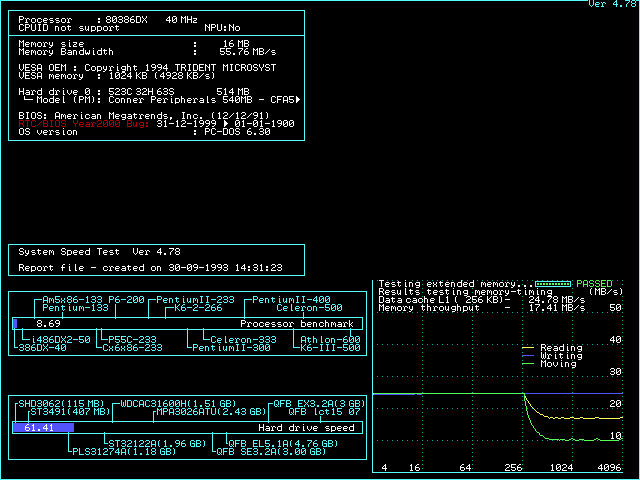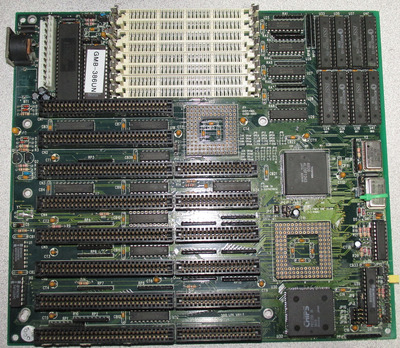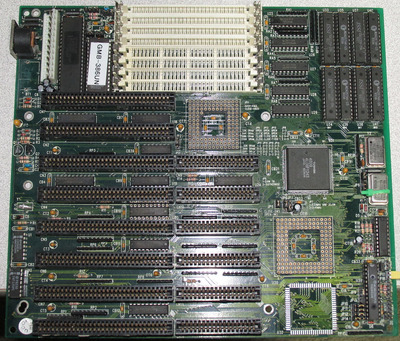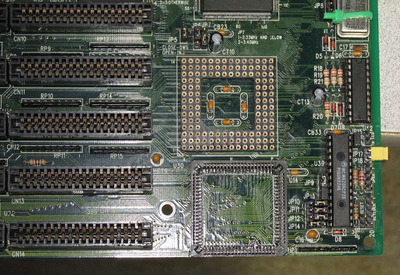First post, by Eep386
A bit of a running log, though right now kind of low priority.
Got one of these from eBay earlier. As usual it was sold untested without CPU, RAM of any kind and with quite a bit of damage.
Upon initial inspection, it was in pretty rough shape: four SIMM slots have broken holder pins while the other four had bent retention springs, and close to 1/3 of the pins of the Toshiba-branded Unichip U4800 ASIC were loose. Also there was some VARTA battery spillage.
So I straightened out the bent springs and reflowed the lifted pins, and cleaned up the VARTA mess. (And yes, I showed the VARTA the door to the dustbin.) Thank goodness the broken SIMM slots weren't bank 0!
About a week later my slightly mangled-but-still-living Am386DX-40 CPU arrived, plugged it in to test, and much to my surprise I got a POST on the first try.
However, it was very unstable outside of POST and CMOS setup, though it seemed to get better as it ran. So I thought, okay, probably time to look at the tantalum caps on the board for good measure.
Suddenly, it started running glacially slow, and nothing in CMOS setup or even the turbo button had any effect. CACHECHK reported a CPU speed of 16.5 MHz.
Tried changing the oscillator, no difference. Even tried a different oscillator, a 66 MHz (33MHz), and that made things worse: now it wouldn't ever leave POST.
Just then, I noticed a jumper to bypass the turbo switch, so I set that - and that fixed the problems I was having. My speed was back and the board is now rock solid.
So, my guess is something in the turbo circuit failed in spectacular fashion, but I am not particularly motivated to find out what it was right now. Probably that socketed 74FCT244 that's right next to the oscillators. (The fact that it's socketed on a board of this vintage, hints that it might have been a high failure-rate part.) It's fine as it is, turbo button be damned, and I'd rather worry about fixing the obvious damage to the SIMM slots.
In the meantime got some benchmarks of it running an Am386DX-40 at 40MHz. Even with 256K of interleaved and write-back cache it's well behind my MX305 board with only 8KB of integrated cache, but it's by no means the worst performing 386DX board I've seen.
Life isn't long enough to re-enable every hidden option in every BIOS on every board... 🙁



